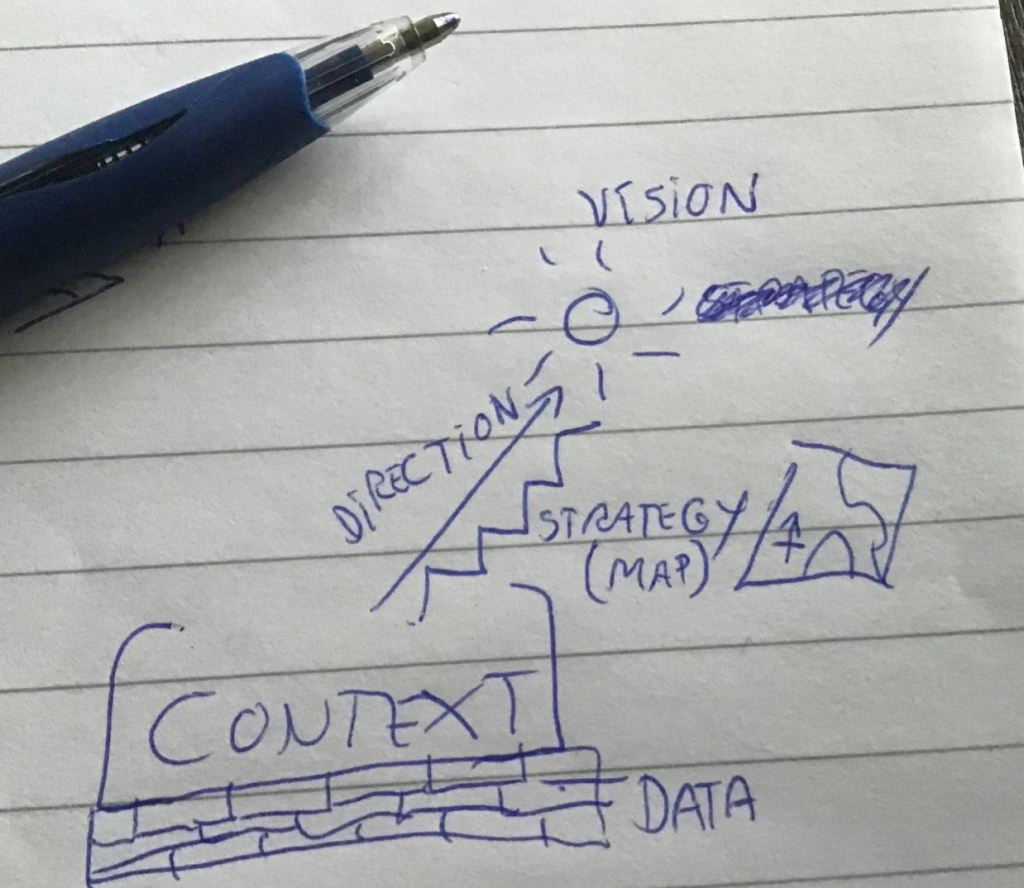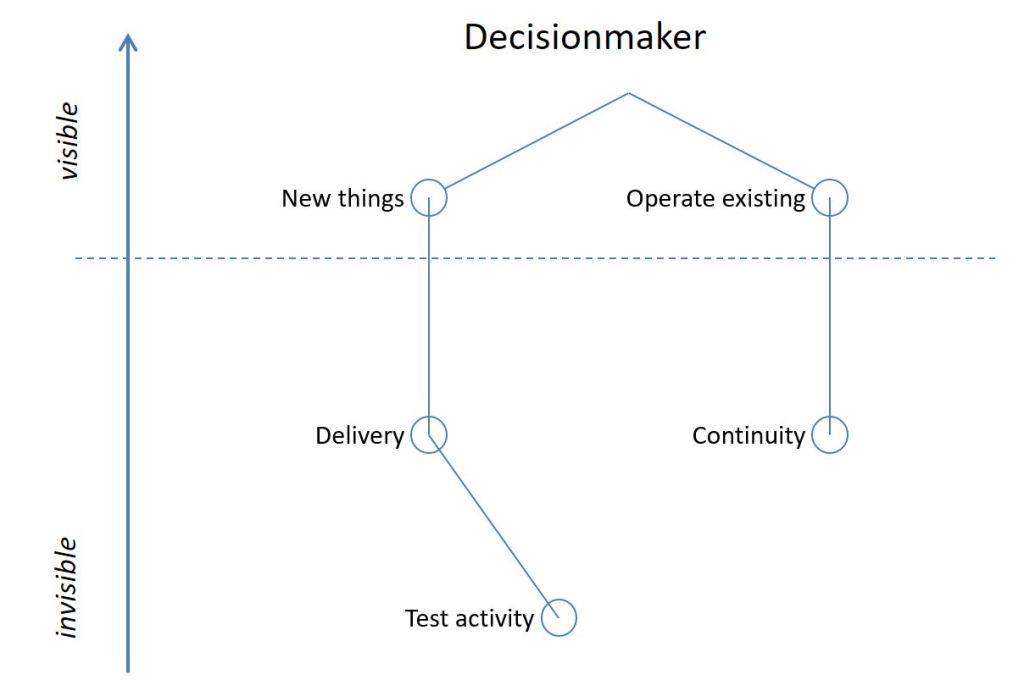Strategy is not where you are heading, but how you’re getting somewhere in the long run. That goes for all strategies, and even for test strategies. Though for test strategies we often get caught up in mechanics of selector strategies, testing types and techniques that we lose track of the higher purpose: Moving the business towards a vision.
A while back I drew this drawing. Notice how I also fell in the trap, and put the strategy as a goal. Sometimes the vision is explicit and countable, sometimes it’s a more fuzzy future state. Either way, we need to move from the AS-IS to the TO-BE, and for that we need directions through the landscape.

I have just read an strategy slide illustrating a so called “strategy” in 4 stages: Ideation, Scoping, Implementation and then Maintenance. With what we know know about agile software deliveries, beating Conway’s law and changing characteristics – it seems so unimaginative and shortsighted. The is no such state as maintenance, there is only change. (Though, I forgive them – Things are the way they are because they got that way.)
The only constant is Change.
As time passes models emerge, gain traction, gets critiqued and fades away. Maaret points out even quadrant models have flaws. That’s ok. “All models are wrong, but some are useful” (as the quote goes). Also, some models are useful only in a specific context. That’s ok too, just don’t extrapolate, that one model fits all contexts. .. oh, and that’s not my intention here either. This post is at best a reframing of strategy work, for the contexts where situational awareness is encouraged (See: Westrum Generative orgs).
Rewrite the strategy
“The way we have always thought about strategy is very centralized and top-down. That’s controlling and directive – and leads to very detailed strategic plans. We need to move towards something lighter, that is driven by shared-purpose.”
Rachel Happe, control is for amateurs, JBOYE 2018.
The models we used yesterday will not help us to understand the future. We need to innovate. The trendy “Domain Driven Design“, “Lean Agile Scotland” and others a picking up Wardley Mapping. It seems to fit pathfinding for test strategies as well, on three accounts:
- Everything evolves. Gone are the days where the system stack could be written in a fixed diagram. From now on we need to consider the whole IT solution. Parts of it is always moving somewhere new. While a fixed test strategy document can help establish expectations – the visualization and communication around the strategy is the key objective.
- Aligns subcomponents to business needs. Oh how we struggle to make the testing and work of a test manager visible and aligned with the business needs. A key feature of a Wardley map is to make a clear line from the business needs to the underlying subcomponents, that’s a simple breakdown as will all purpose-driven activities.
- The Relative position Matters. Often I have wished for a test strategy just to be a mind-map of areas to explore. While a mind-map might help you flesh out areas of testing, you have to annotate it to identify which are more valuable. Sometimes it can be the part of that map that is most detailed, but that could as well just be an area of most known-known, and less unknowns.

So when the Ministry of Testing calls out: “What is a test strategy?” and “What influences a test strategy?” – I will answer: A strategy is the way to get to the vision. It’s influenced by your current reading of the landscape, in form of a map. But beware, the map is not the territory. If the map doesn’t fit the landscape, find a new map. If you’re lost, any old map will do. Either way – strategy is about making a map.
“They brought with them a map representing the sea,
Without any vestige of land.
And all were most pleased when they found it to be
A map they could all understand.”
(Lewis Carroll, ‘The Hunting of the Snark’)
I’ll just leave that there.
LikeLike
[…] Strategy is about Making a Map Written by: Jesper Ottosen […]
LikeLike
[…] then again the team would probably have stalled over the very concept of a strategy map. People are weird. No matter how it looks at first, it’s always a people problem. And even if you […]
LikeLike
[…] everything. That reminded me of the time I wrote a 100-page test strategy that was very far from strategic – it was rather a specification of the how & the what, and less about why. Unfortunately, […]
LikeLike